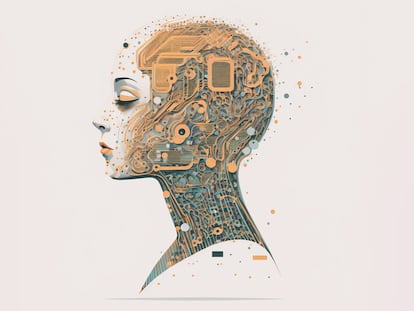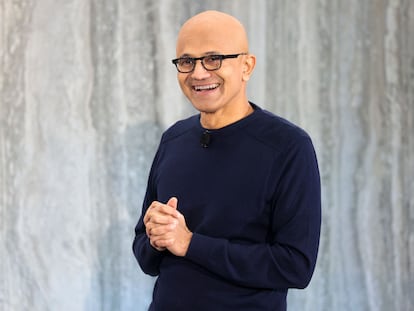Photo competition winner who used AI-generated image: ‘I want to open a discussion’
Boris Eldagsen says he wanted to test the competition against the proliferation of a new technology that complements photography but needs to be classified differently

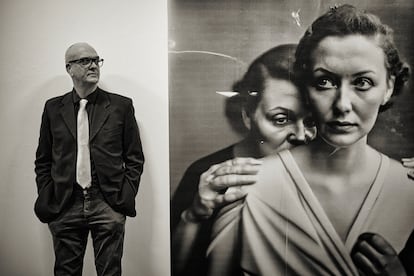
German artist Boris Eldagsen has sent shockwaves throughout the world of photography by entering the prestigious annual Sony World Photography Awards with an image that was not what it seemed. He submitted what the judges thought was an old-fashioned, sepia-toned, black-and-white photograph, of two women of different generations. The photo looked like it was taken in the early 20th century, and it won the creative category. But neither of the models posed for him, nor did he measure the light in his studio. As he himself revealed when he declined the award, it was an image created using artificial intelligence (AI).
“My goal was to open a discussion, and I succeeded,” Eldagsen, a 52-year-old photographer from Berlin told EL PAÍS. Last fall, he considered testing the photo contests to see “if they had done their homework” and if they were aware that people could start submitting images generated using AI tools, he explains. The best way was to compete himself with one of his creations, entitled The Electrician, from the Pseudomnesia series. The term that means false memory, which might have given the judges a clue.
Eldagsen, a member of the German Academy of Photography, is satisfied with the result of his experiment. He believes there is an urgent need to address the fact that the realism of AI-generated images is such that it is becoming increasingly difficult to differentiate an original from an image created by algorithms. “It’s something we need to figure out as a community. AI is not photography and should not compete in the same category,” he says.
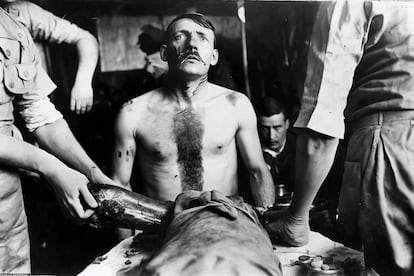
The dilemma Eldagsen wants to pose to his colleagues is whether it makes sense for the photography world to welcome AI-generated images under its umbrella or whether it would be wiser to exclude them. “It’s a complex question and no one wanted to address it,” he says. “When I gave up the award everyone kind of froze. Like a rabbit looking at the fox, and the rabbit is the world of photography and the fox is AI-generators.” While Eldagsen himself is not clear about the answer, he is clear about the need for debate.
“I love photography. I have been a photographer for 30 years and now I work with AI on a daily basis. They are related. AI uses the language of photography and the result is similar, but the images have been produced in a different way and are something else,” he insists. What is his solution? For the time being, give these creations another name, so that they are at least labeled differently. “Call them promptography.” The prompt is the text used to describe the image you want to generate to talk to the AI.
Photography is one of the arts that is most affected by the arrival of artificial intelligence, because it allows almost anyone to create hyper-realistic images simply by giving instructions to a computer. But Eldagsen rejects the predictions by harbingers of doom who claim it kills creativity. “Not at all. What I like about AI is that it works with knowledge and experience. It is an immaterial material. And there is a big difference between the use of a 50-year-old, who has been an artist and photographer for 30 of those years, and a 15-year-old. The kid will create an American superhero. I won’t.” The fascinating thing about this technology, Eldagsen says, is that it allows you to use everything you have previously learned. So, for the older generations, “it’s a technological revolution that you have to know how to take advantage of.”
Those responsible for the award, the World Photography Organization — Sony only sponsors it — claim that Eldagsen had not made it clear to what extent artificial intelligence had played a role in his work, suggesting that they believed it might be a retouched photograph or that he was using it as a prop. For his part, Eldagsen is very upset that the organization tried to cover up the issue, he says, without entering into the debate that he considers urgent and unavoidable.
All mentions of the award that the German photographer won have disappeared from the organization’s website and it is no longer on display at London’s Somerset House. Eldagsen even went as far as to travel to the venue to take to the stage during the awards ceremony last week and explain what happened. He also released an open letter saying, “Thank you for selecting my image and making this a historic moment, because it is the first AI-generated image to win a prestigious international photography competition. How many of you knew or suspected that it was AI-generated? Something doesn’t feel right, does it?”
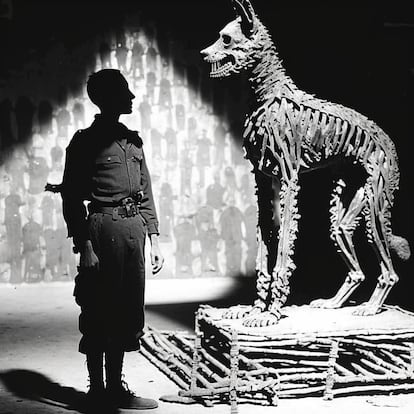
In addition to winning in the creative category, he had also won in the general category, which guaranteed him a prize of €5,000 ($5,495) and Sony photographic equipment that he planned to donate to a photography festival in Odessa (Ukraine). The names of the winners were announced in March, and at the beginning of April, several specialized publications reported that Eldagsen’s image was generated by AI. One of the pieces was called The woman who never was. The controversy exploded on the day of the awards ceremony with the photographer’s rejection and his open letter of explanation on April 14th.
“The organization was always aware that this image included elements of AI throughout the evaluation process,” a spokesman for the World Photography Organization affirmed. “While some elements of AI practices are relevant in artistic image-making contexts, the awards have always been and will continue to be a platform to champion the excellence and skill of photographers and artists working in this medium,” he adds. If they have not responded to the German photographer’s calls for discussion, it is because “his deliberate attempts” to mislead have caused them to believe they cannot establish “a constructive dialogue” with him.
Eldagsen says that on previous occasions he had sent photographs to this contest but they had not been selected. He was surprised that this year they were, especially with an AI image, and he suspects it was helped by the prominence of an attractive young woman as the central figure.
The artist does not believe that AI is a threat to photographers and artists, but he is aware of the challenge this technology poses to society. “It is absolutely necessary for our democracies to clearly distinguish which image in the media is real and which is not,” he says. In this regard, he mentions a proposal from the German freelance photographers’ association, which suggests labeling images with the letters A, M and G: A for authentic, M for manipulated and G for generated. “I think it would make a lot of sense to do it that way, but I’m afraid it would be complicated to implement. Is there money to fund the necessary staff and equipment?”
Sign up for our weekly newsletter to get more English-language news coverage from EL PAÍS USA Edition
Tu suscripción se está usando en otro dispositivo
¿Quieres añadir otro usuario a tu suscripción?
Si continúas leyendo en este dispositivo, no se podrá leer en el otro.
FlechaTu suscripción se está usando en otro dispositivo y solo puedes acceder a EL PAÍS desde un dispositivo a la vez.
Si quieres compartir tu cuenta, cambia tu suscripción a la modalidad Premium, así podrás añadir otro usuario. Cada uno accederá con su propia cuenta de email, lo que os permitirá personalizar vuestra experiencia en EL PAÍS.
¿Tienes una suscripción de empresa? Accede aquí para contratar más cuentas.
En el caso de no saber quién está usando tu cuenta, te recomendamos cambiar tu contraseña aquí.
Si decides continuar compartiendo tu cuenta, este mensaje se mostrará en tu dispositivo y en el de la otra persona que está usando tu cuenta de forma indefinida, afectando a tu experiencia de lectura. Puedes consultar aquí los términos y condiciones de la suscripción digital.
More information
Archived In
Últimas noticias
Most viewed
- Reinhard Genzel, Nobel laureate in physics: ‘One-minute videos will never give you the truth’
- Oona Chaplin: ‘I told James Cameron that I was living in a treehouse and starting a permaculture project with a friend’
- Pablo Escobar’s hippos: A serious environmental problem, 40 years on
- Charles Dubouloz, mountaineering star, retires at 36 with a farewell tour inspired by Walter Bonatti
- Why we lost the habit of sleeping in two segments and how that changed our sense of time
